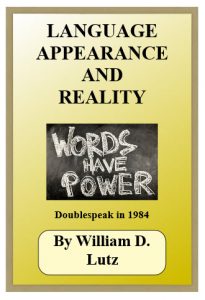THERE ARE AT LEAST FOUR KINDS OF DOUBLESPEAK. The first kind is the euphemism, a word or phrase that is designed to avoid a harsh or distasteful reality. When a euphemism is used out of sensitivity for the feelings of someone or out of concern for a social or cultural taboo, it is not doublespeak. For example, we express grief that someone has passed away because we do not want to say to a grieving person, “I’m sorry your father is dead.” The euphemism passed away functions here not just to protect the feelings of another person but also to communicate our concern over that person’s feelings during a period of mourning .
However, when a euphemism is used to mislead or deceive, it becomes doublespeak. For example, the US .State Department decided in 1984 that in its annual reports on the status of human rights in countries around the world it would no longer use the word killing. Instead, it uses the phrase unlawful or arbitrary deprivation of life.
Thus the State Department avoids discussing the embarrassing situation of the government-sanctioned killings in countries that are supported by the United States . This use of language constitutes doublespeak because it is designed to mislead, to cover up the unpleasant. Its real intent is at variance with its apparent intent. It is language designed to alter our perception of reality.
A second kind of doublespeak is jargon, the specialised language of a trade, profession, or similar group. It is the specialised language of doctors, lawyers, engineers, educators, or car mechanics. Jargon can serve an important and useful function. Within a group, jargon allows members of the group to communicate with each other clearly, efficiently, and quickly. Indeed, it is a mark of membership in the group to be able to use and understand the group’s jargon.
